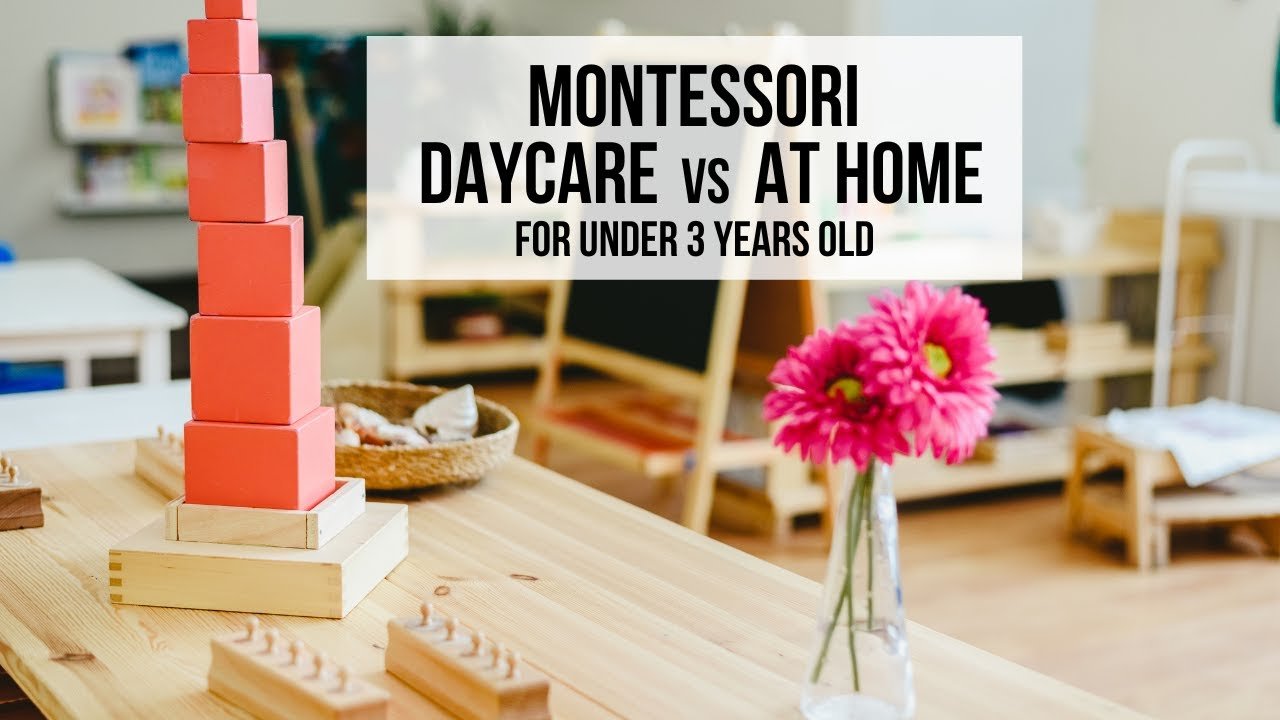In this article, we will explore the comparison between Montessori daycare and at-home care for children under 3 years old. The video, created by Hapa Family, provides a mini update and discusses the topic of Montessori parenting principles for parents of young children. The video addresses a question from a parent in Canada who is deciding between doing Montessori at home or sending their child to Montessori daycare. The speaker, Ashley, emphasizes that there is no right answer, as it depends on each family’s situation. Ashley encourages parents to evaluate the quality of the daycare and consider the benefits of both options before making a decision. Flexibility is key, and she reminds parents that they can always make changes if needed.
Comparison between Montessori daycare and at-home care for children under 3 years old

Introduction
When it comes to deciding between Montessori daycare and at-home care for children under 3 years old, there are several factors to consider. Each option has its own benefits and drawbacks, and the choice ultimately depends on the unique needs and circumstances of the child and their family. In this comprehensive article, we will explore the quality of Montessori daycare, the benefits of staying at home, the importance of socialization, considerations for goals and the child’s needs, evaluating resources, and the importance of flexibility in decision-making. By examining these areas, parents can make an informed decision that best suits their family’s needs.
Quality of Montessori Daycare
When evaluating the quality of Montessori daycare, there are several factors to consider. One of the key aspects is the qualifications and training of the staff. Montessori teachers should have specific training in the Montessori method and philosophy to ensure they can provide a supportive learning environment for young children.
Another important factor is the use of Montessori materials and the overall environment of the daycare. Authentic Montessori daycares should have a well-equipped environment that allows children to engage with the materials and foster independent learning. Additionally, considering the child-to-teacher ratio is crucial to ensure that each child receives individualized attention and guidance.
The daily routine and curriculum followed at the daycare are also important considerations. A well-planned and structured routine can provide stability and predictability for young children, while a curriculum that aligns with Montessori principles can enhance their development.
Authentic Montessori Experience
Ensuring that a daycare provides an authentic Montessori experience is essential to derive the maximum benefits for the child. An authentic Montessori experience follows the philosophy and principles established by Maria Montessori. This includes providing opportunities for independent learning, self-correction, and hands-on exploration.
Observation and guidance play a crucial role in a Montessori environment, and it is important to assess whether the daycare promotes these practices. By observing and guiding children, the teachers can identify their individual needs and provide appropriate materials and activities to foster their development.
Integration of Montessori principles in various aspects of the daycare, including the use of child-sized furniture, promoting self-care skills, and creating a sense of order and beauty in the environment, are also indicative of an authentic Montessori experience.
Benefits of Staying at Home
Staying at home with a child under 3 years old can offer several unique advantages. One of the primary benefits is the ability to provide one-on-one attention and bonding with the child. By staying at home, parents can focus on nurturing the child’s emotional and cognitive development, building a strong parent-child relationship.
The flexible schedule that comes with staying at home allows parents to tailor activities to the child’s needs and interests. They have the freedom to provide a stimulating environment and engage in play-based learning that aligns with their child’s individual development.
Staying at home also provides the opportunity for natural learning experiences. Children can explore their surroundings and engage in unstructured play, which promotes creativity, problem-solving skills, and curiosity.
Parental involvement in a child’s development is essential during the early years. By staying at home, parents can actively participate in their child’s learning journey, reinforcing Montessori principles and providing ongoing support and guidance.
Importance of Socialization
While staying at home offers numerous benefits, it is important to consider the value of socialization for young children. Socialization plays a vital role in a child’s overall development, including the development of social skills, emotional intelligence, and empathy.
Montessori daycares provide a conducive environment for social interaction with peers. Children have the opportunity to engage in collaborative activities, learn from one another, and develop valuable social skills such as sharing, taking turns, and problem-solving in a group setting.
However, parents can also encourage socialization at home through playdates, attending community events, or joining parent-child groups. Balancing independent play and social interaction ensures that children have opportunities to develop both independence and collaboration skills.
Considering Goals and Child’s Needs
When deciding between Montessori daycare and at-home care, it is important for parents to identify their personal goals and the goals they have for their child’s education and development. Understanding these goals can help guide the decision-making process.
Parents should also consider how well each option aligns with Montessori principles and the child’s individual learning style and personality. Some children thrive in a group environment with structured activities, while others may benefit more from the individualized attention and flexibility provided at home.
Determining the child’s needs, including their temperament, learning style, and any specific requirements, can help parents assess which option will best support their development.
Evaluating Resources
Evaluating the available resources is essential when making a decision between Montessori daycare and at-home care. Financial considerations play a significant role, as Montessori daycares often come at a higher cost compared to other daycare options. Parents must determine whether they have the financial means to enroll their child in a Montessori daycare or if at-home care is a more viable option.
Additionally, assessing the availability of reliable caregivers is crucial. If parents choose at-home care, they need to ensure that they have access to trustworthy and capable individuals who can provide the necessary support and care for their child.
Access to Montessori resources, such as books, materials, and educational tools, can also influence the decision. Parents should consider whether they have the means to create a Montessori-inspired environment at home or if a daycare setting would offer better access to these resources.
The presence of a supportive community and networking opportunities can also impact the decision. Joining parent groups or connecting with other Montessori families can provide valuable support, guidance, and shared resources.
Flexibility in Decision
Flexibility is a key aspect of the decision-making process. It is essential for parents to remember that they can always adjust their care arrangements if they find that the chosen option is not meeting their child’s needs or their own goals.
Regularly reassessing the child’s progress and happiness is important to ensure that the chosen care option remains suitable. If the child is not thriving or showing signs of discomfort or distress, parents should be open to exploring alternatives.
Parents can explore other Montessori options, such as part-time enrollment, Montessori-inspired playgroups, or co-op programs. They can also consider combining approaches, such as attending a Montessori daycare for a few days a week and providing at-home care on other days.
Conclusion
Choosing between Montessori daycare and at-home care for children under 3 years old requires careful consideration. Parents should evaluate the quality of the daycare, ensuring it provides an authentic Montessori experience. They should also weigh the benefits of staying at home, such as one-on-one attention and flexibility, and the importance of socialization.
Considering personal goals, the child’s individual needs, and available resources is crucial in making an informed decision. Flexibility is key, and parents should be open to adapting their care arrangements if necessary. By finding a balance between the child’s care and education, parents can create an environment that best supports their child’s development and fosters a lifelong love for learning.

